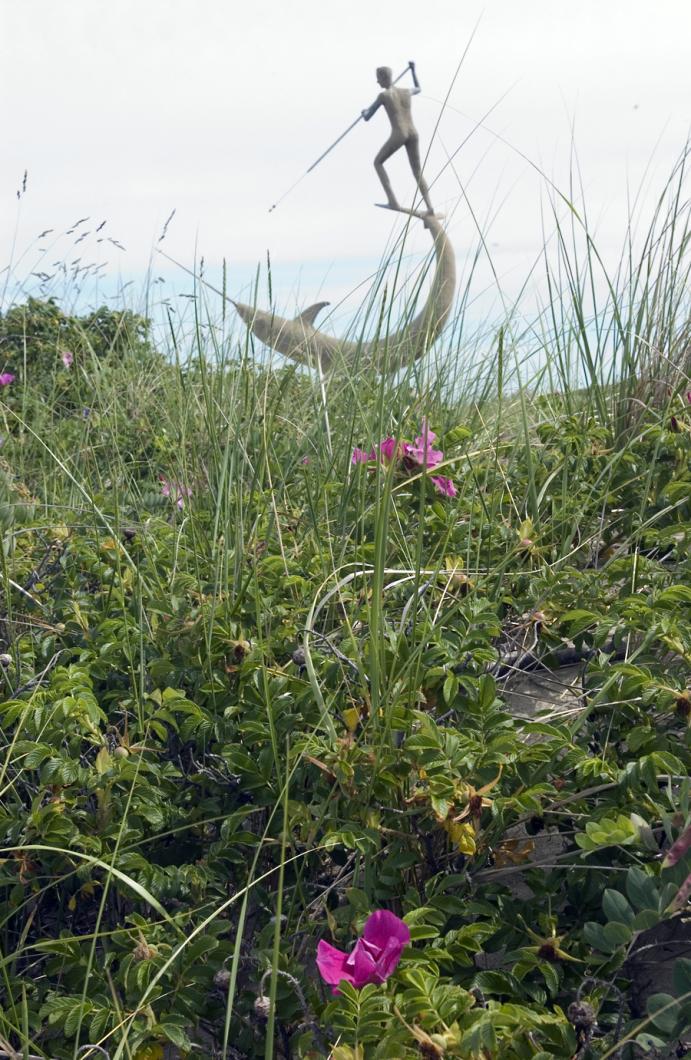Thorny, yes; fragrant, certainly; invasive, sometimes.
Wild roses, even with their imperfections, have many fans. Anne Bronte noted the tradeoff of pain and pleasure when she observed, “He that dares not grasp the thorn Should never crave the rose.”
This time of year, you might overlook their thorns, but can’t miss their heady fragrance filling the warm June air. Untamed and uncultivated rose varieties flourish in our Islandwilds. Fields, forests and even beaches have come alive with their scent and colors.
The rose most familiar to Islanders is rosa rugosa or beach rose. It graces sandy dunes and shorelineseverywhere. It delights us now with its colorful flowers, but these edible blossoms are just a prelude to the rich rose hips that willfollow. Loaded in vitamin C, these tart fruits boast 100 times more, pound for pound, of this nutrient than oranges, but sti ll haven’t won over all of their critics.
Beach rose comes from afar — Asia is its dominion — and though naturalized it is still viewed by some as a thorny problem and an invasive species.
Another alien keeping beach rose company is multiflora rose. Look for its showy clusters of white to pink flowers on arching branches, calledcanes. This sister species was introduced for use as rootstock for ornamentalroses. Its reputation was solid through the 1960s, when the United States Soil Conservation Service promoted its use as live fencing to c onfine livestock, for erosion control, and for highway beautification.
Little did its advocates know of its sinister side. Multiflora rose has become one of the “least wanted” plants around. It is on almost everyone’s list of invasive species and has confounded those that try to eradicate it. Prolific and fecund, each individual plant can produce up to 500,000 seeds per year, some of which can remain viable for as many as 20years! There is almost no stopping it, even though the sale and importation of this plant in Massachusetts has been prohibited since January of 2006.
Fighting off the forces of evil are the native roses, including Virginia rose and Carolina rose. Virginia rose differentiates itself by its curved thorns and prickle-free stems. Standing up to the encroachment of the invasives, they embody another rose-inspired saying, which we all could live by:
“Be a rose which gives fragrance even to those who crush it.”
Suzan Bellincampi is director of the Felix Neck Wildlife Sanctuary in Edgartown.




Comments
Comment policy »